Trucking companies, owner-operators, and semi-tractor producers are always on a relentless quest to save money. Semis move much of America, and tons of money gets shoveled into just fueling rigs. If an operator can spend less money fueling, that’s more money they get to keep. One of the best ways to cut down on semi-tractor fuel consumption is to make the tractor slip through the air as best as possible. A little under four decades ago, Peterbilt tried to change the game for cabover semis with the Model 372. This super slick, helmet-shaped aero truck managed to squeeze out 11 mpg when conventional trucks got 8 mpg.
As with so much of automotive history, the Peterbilt Model 372 technically has its roots in the multiple oil crises of the 1970s. Fuel prices had nearly tripled, which threatened to throw shipping into a spin. As Fleet Owner explains, paying for fuel makes up a quarter of motor carriers’ average operating costs today, and fuel costs are always changing. The publication expands on this by noting that fuel alone is one of the most expensive factors in running a fleet.
To put this into perspective, Fleet Owner notes that, from the period of 2014 to 2023, fuel prices cost carriers on average 55 cents per mile, which was bested only by driver wages, which averaged 78 cents per mile. Now, imagine this fuel cost nearly tripling over less than a decade. The numbers were different, of course, but that’s what happened during the 1970s.

Trucking fleets cannot dictate the prices they’ll pay for fuel, so one of the best ways to fight higher prices is to make the truck itself cheaper to operate. Back in the 1970s, America attempted to cut down on its insatiable thirst for fuel with efforts that included downsizing cars and the 55 mph national speed limit.
This era was also a time of reckoning for semi-tractors. Until then, most semis were not built with aero in mind. Due to total length and weight restrictions, the semis that ruled the road were ultra-blocky cabovers, which maximized loads thanks to their more compact footprints. Conventionals were also on the road, too, and they had about the same attention to aerodynamics as your average K-Mart. Only weird experiments like the Paymaster semi dabbled in high aero.
But it was now time for a change. If the trucking industry were to pull its way into the future, semis just couldn’t get 5 mpg anymore. As I wrote earlier this summer, trucking historians often point to the 1984 Kenworth T600 as being the first mainstream semi to be built from the ground-up to be aerodynamic.
Peterbilt Goes All-In On Aero
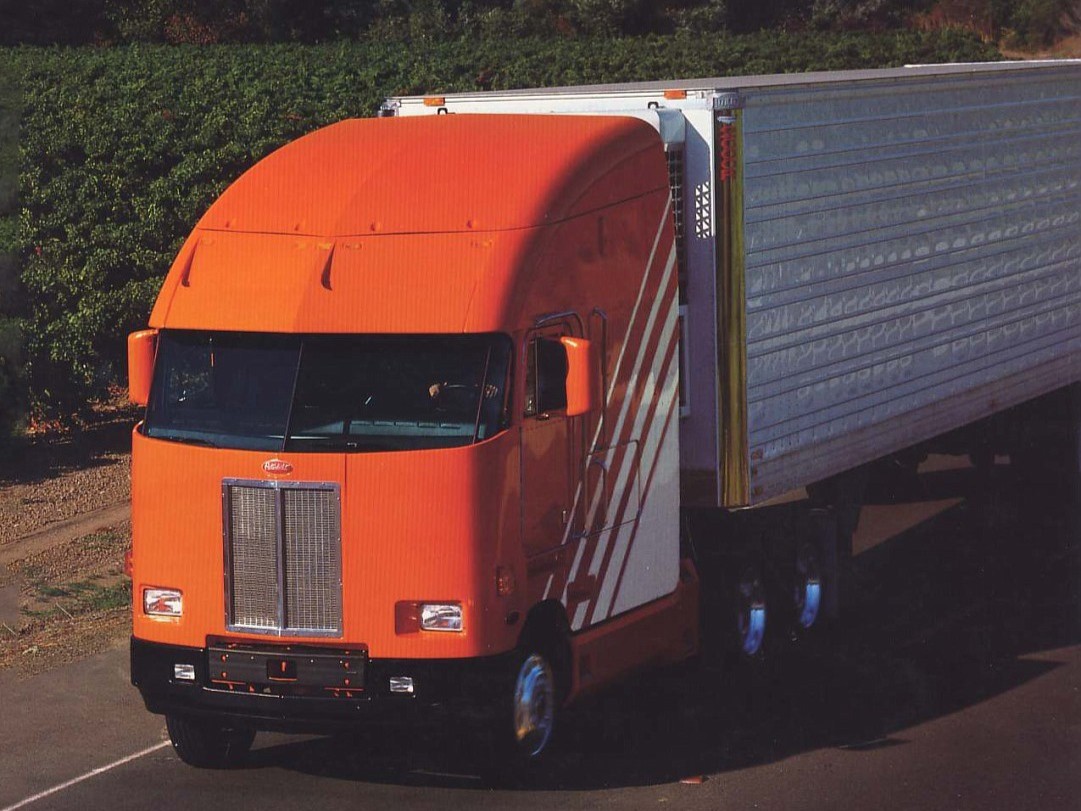
The success of the T600 had a ripple effect through Paccar Inc., the successor company to the Pacific Car and Foundry Company and owner of Kenworth, Peterbilt, and other companies. Peterbilt followed the lead set by Kenworth in 1986 with the 377 A/E, which featured an aerodynamic fiberglass hood and sleeper. This was a great start, but Peterbilt had greater ambitions. Like Kenworth, Peterbilt wanted to change the game.
According to the American Truck Historical Society, development on the Model 372 was conducted in Peterbilt’s facility in Denton, Texas. At its core, the Model 372 shares the cab structure and engine of the Model 362, the blocky, but popular cabover pictured below.
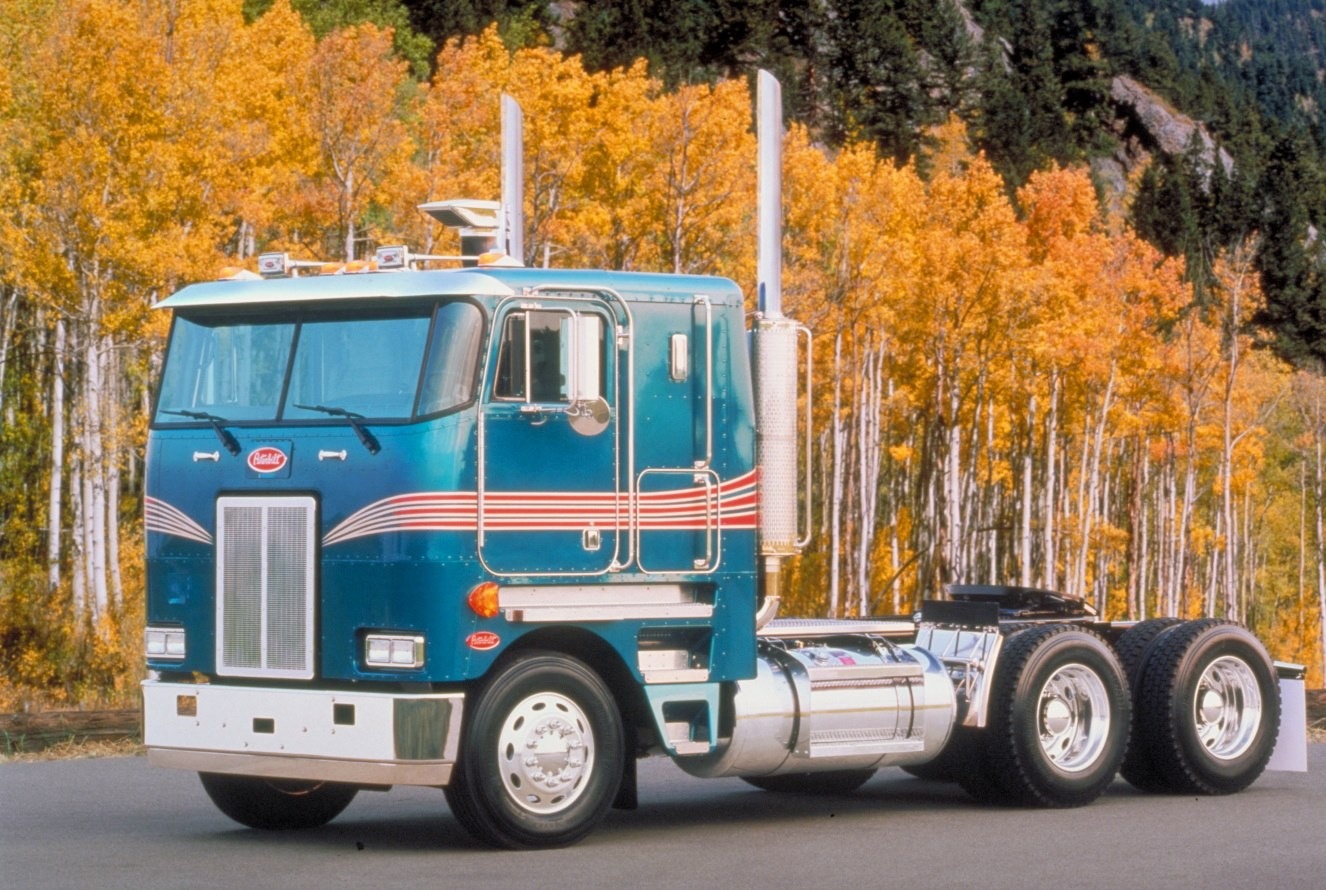
By now, America had finally set nationwide standards on length and weight. These regulations meant that truckers could now enjoy the comfort of a conventional semi while still hauling profitable loads. This would eventually spell the end of the cabover’s reign.
However, at this point in time, cabovers were still popular among truckers, and Peterbilt was brewing up something it thought was revolutionary.

To create the 372, Peterbilt started with the 362 cab, and then smoothed it out to the extreme. The Model 372 features an integrated roof fairing, fiberglass body panels, fiberglass nose, inset lighting, wrap-around bumper, and optional side skirts that were all added to the truck in the name of aerodynamics. Peterbilt says that the 372 spent hours in a wind tunnel and that, ultimately, the final shape was designed by the wind and computer-aided design.
Something a bit weird for the Model 372 of its day was the size of its cab. As I noted earlier, one of the primary advantages of the cabover was that, by piling the cab over the engine and the front axle, you could maximize your trailer length to carry more cargo. Well, this wasn’t a big deal anymore. The Peterbilt Model 372 measured 127 inches from the front bumper to the back of the cab, making the cabover one of the largest of its kind back then.
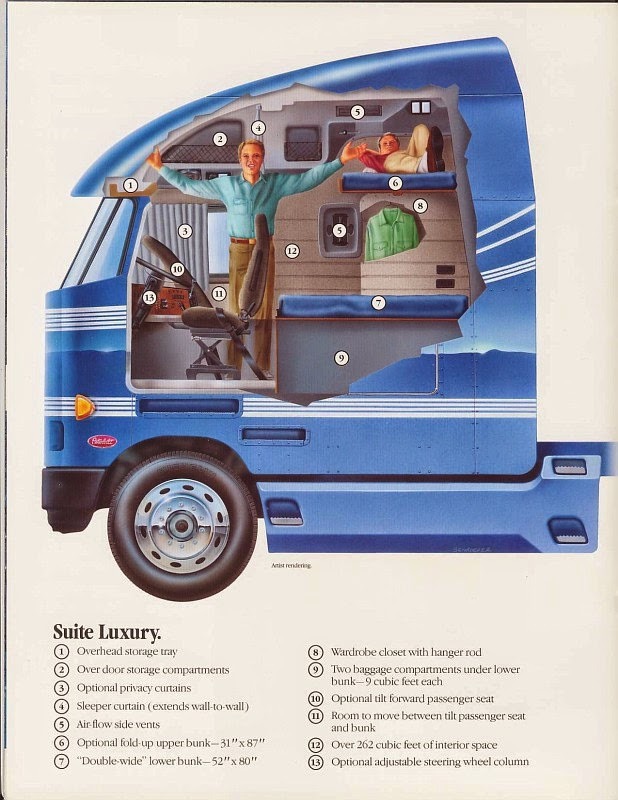
The American Truck Historical Society notes that this was done primarily for aero. However, Peterbilt also used this opportunity to give the Model 372 a spacious and luxurious interior. The cab featured 262 cubic feet of interior volume, which included front seats that slid forward to ease access to the rear, a full-size lower bunk, air-ride seats, privacy curtains, enhanced insulation, and options like a TV stand and a refrigerator. Other neat tricks baked into the truck included enough headroom for a driver to stand in the truck, plus an adjustable steering wheel for increased ergonomics.
The innovations didn’t end there. Peterbilt knew that it had built a monster of a rig, and didn’t want to hamper serving the unit.
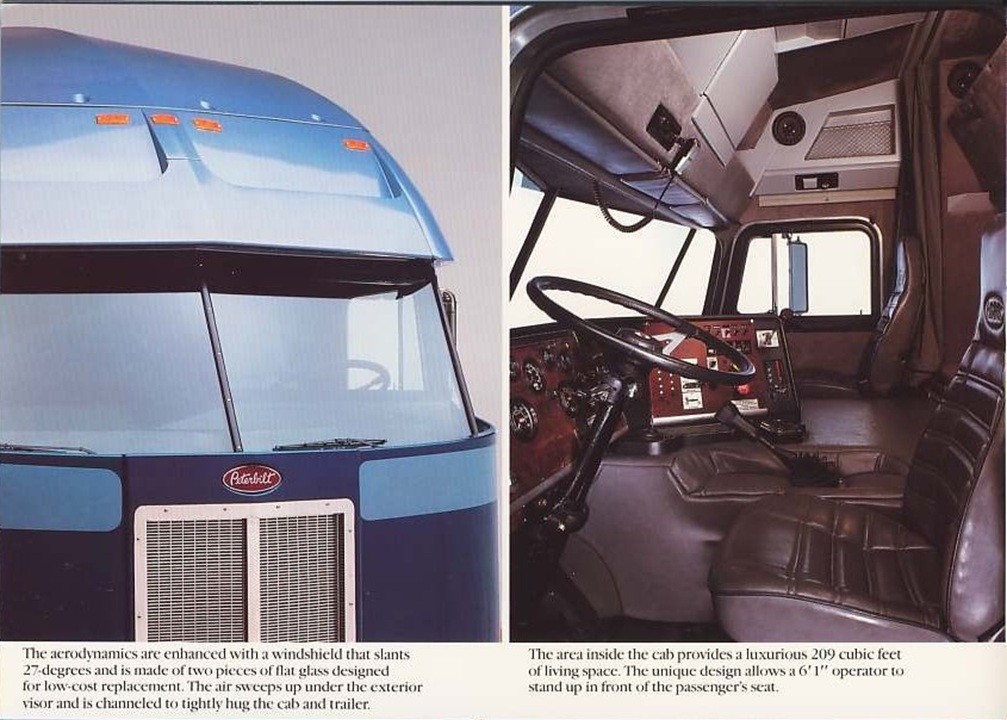

The Model 372 was designed to have a nose that opens upward, allowing a mechanic easy access to over 30 system components from the HVAC system to brake valves. For more intense maintenance, both the front end opened and the cab tipped open like a typical cabover.
When the Model 372 started sales in 1988, Peterbilt saw the truck setting the standard for cabovers. Allegedly, the truck had 50 percent lower drag than the Model 362, and the extreme aero, combined with the luxury and what Peterbilt called “elegant” looks, would have the 372 setting the pace.
Peterbilt Proves Its Claims
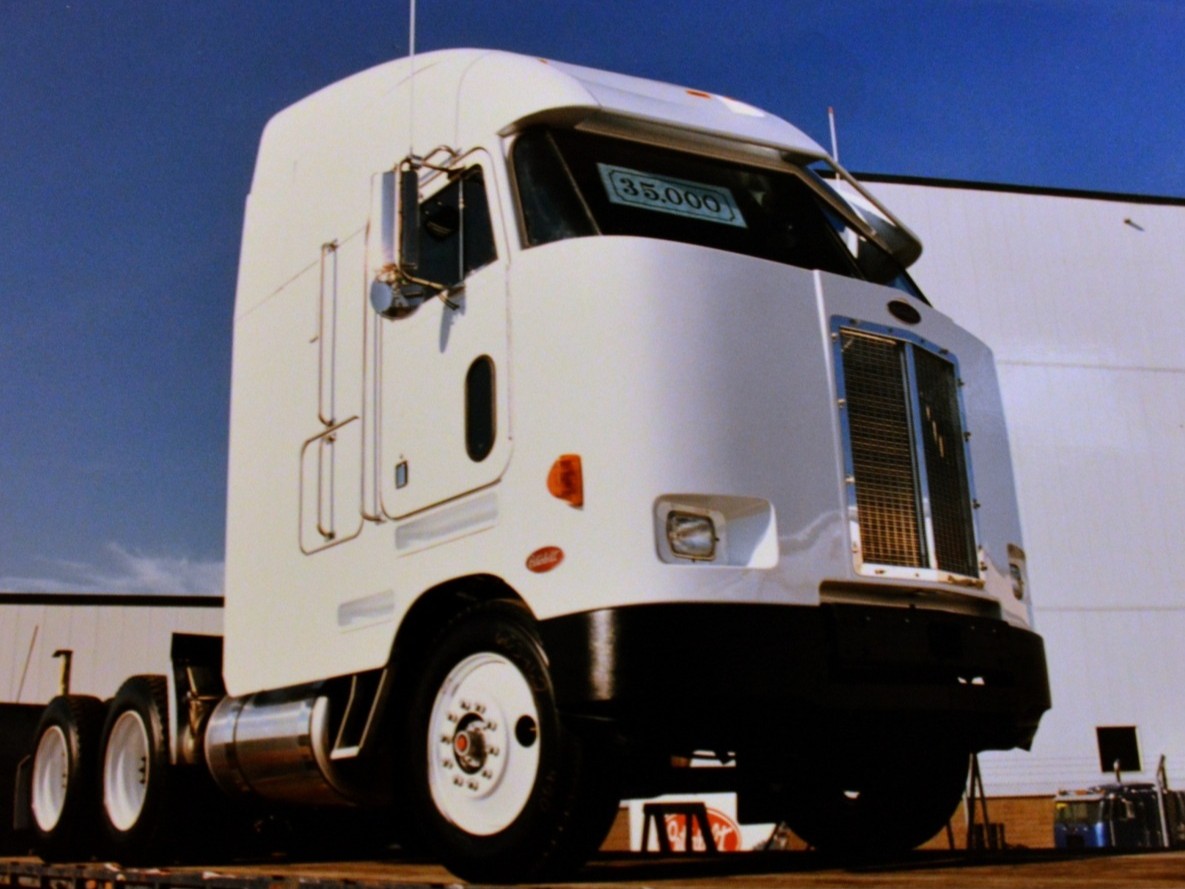
In 1990, Chris Cavette, product marketing manager at Peterbilt, claimed: “Getting good fuel mileage in a Class 8 vehicle isn’t all that difficult anymore. Pick an aerodynamic tractor, spec it right and drive it right and you’ll get outstanding fuel economy.” Then, he decided to prove it. That year, Peterbilt took one of the Model 372 prototypes, hooked it up to a modified trailer, and decided to haul it across the country. This test was covered in the February 1991 issue of DES, a trucking periodical. In the magazine, Cavette said:
“All we did,” Chris said, “was make some refinements to the test vehicle, such as adding a belly pan, nose and side skirts, gap seals, side extenders and a profiled roof fairing.”

The test Peterbilt Model 372 was equipped with a standard powertrain that was available on production versions. In this case, that meant a Caterpillar 3176 10.3-liter straight-six diesel rated for 325 HP at 1,900 RPM. Peterbilt says it chose this engine because it makes 300 HP from 1,300 RPM and on, while also featuring electronic controls and electronic injection. The big Cat up front was backed by a Fuller RTO-12609B nine-speed transmission and an Eaton DS402 tandem rear axle with a 3.90 ratio. Peterbilt said that the Model 372 shipped with short-throw shifters, and the Fuller transmission provided a wide range of ratios.
DES detailed that Peterbilt got pretty obsessive with this testing:
“The test tractor was also equipped with several premium items,including Eaton automatic slack adjusters, Peterbilt FrontAir suspension and Peterbilt hub-piloted 10-hole wheel system (PHP-10). We also chose Alcoa aluminum wheels for their light weight and fitted them with 275/80R22.5 low-profile Michelin XZA-1 tires for low rolling resistance. In addition, Chevron’s Ultra Gear 68 borate lubricants were used in the transmission and axles to reduce friction.”
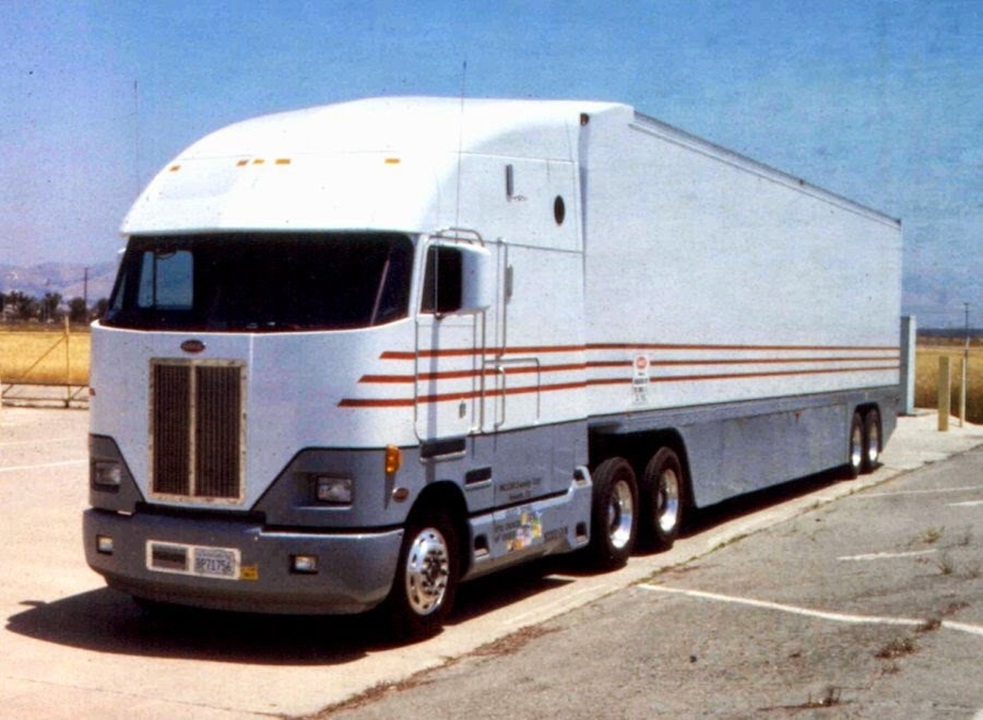
To integrate trailer aerodynamics with the tractor, Chris explained further, Peterbilt took a 45-ft smooth-side van and fitted it with a full-height nose cone to close the gap between the trailer and the tractor’s roof fairing and side extenders.
“Box-section side pods formed from aluminum and fiberglass were also added,” he continued, “to assist aerodynamic efficiency and serve as a spray suppressant. And on the rear of the trailer, pressure recovery panels- or boat tails as they are commonly referred to- were designed to be aerodynamically efficient while still allowing a full width door opening for cargo transfer.”
The neat part is that the test truck didn’t look that different from how today’s aero-obsessed rigs look. Anyway, the truck and trailer were loaded up to 71,200 pounds and hit the road.

In the end, the Peterbilt team managed to average 10.49 mpg driving across America at an average speed of 51 mph, and there were many stretches when the truck did better than 11 mpg, including one stretch in Texas where the truck drove 704 miles averaging 11.54 mpg. Sure, 51 mph doesn’t sound very impressive, but remember that there were lower speed limits back then. Peterbilt noted that it was common for a non-aero semi of the late 1980s to get 7 mpg or 8 mpg under similar conditions, and that the Model 372 could hit 11 mpg. A gain of 3 to 4 mpg is incredible for a semi.
Darth Vader’s Helmet Fails To Sell
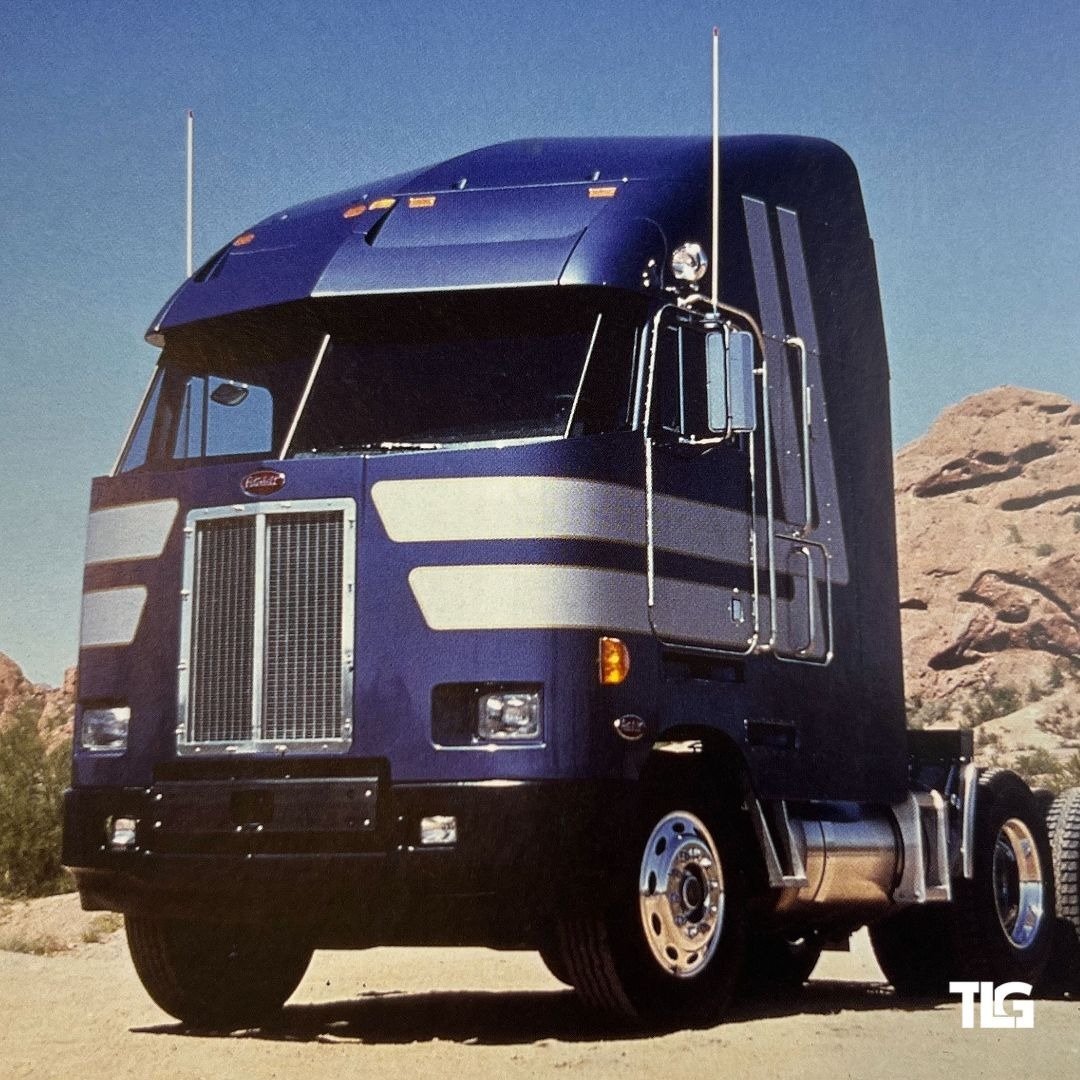
You’d think, then, that truckers would have been all over the Model 372. For a time, the Model 372 seemed promising. RV companies even took the opportunity to convert some Model 372s into aerodynamic luxury motorhomes.
One of those coaches was the $475,000 Genesis Touring Coach, which weighed up to 33,500 pounds, had a fiberglass body, and was advertised to get up to 12 mpg thanks to the slick Pete front end. Other rigs got turned into car haulers.

Unfortunately, despite Peterbilt’s clever marketing and the stunt back in 1991, the 372 never caught on. Worse, it was actually sort of mocked. The book, Big Rigs: The Complete History Of The Semi Truck, claims that truckers of the day called the Model 372 the “Winnebago,” and that wasn’t in a complimentary way. The American Truck Historical Society says that the Model 372 also gained nicknames like the “Football Helmet” and “Darth Vader.”
The Model 372 also came at about the wrong time. While cabovers might have clung to some popularity in the 1980s, that popularity was quickly fading as truckers purchased conventional semis. Peterbilt says that sales were slow enough that, by 1993, it canceled the Model 372 program. Only 772 examples were ever built, which is a lot more examples than the Paymaster, but still abysmal sales. The Model 362 outsold the 372 despite getting worse fuel economy, and sold well enough to continue its production deeper into the 1990s.
Despite the failure of the 372 to capture an audience, Peterbilt didn’t waste its time. Like the other big truck manufacturers of this day, Peterbilt’s aero experiments of the 1980s would find their way into more modern trucks. Now, basically every truck is built with aero in mind. But these manufacturers all had to start somewhere. For Peterbilt, it just so happened that it dipped into the pool of aero trucks headfirst with a truck that looked like a helmet.
(Topshot: Peterbilt)
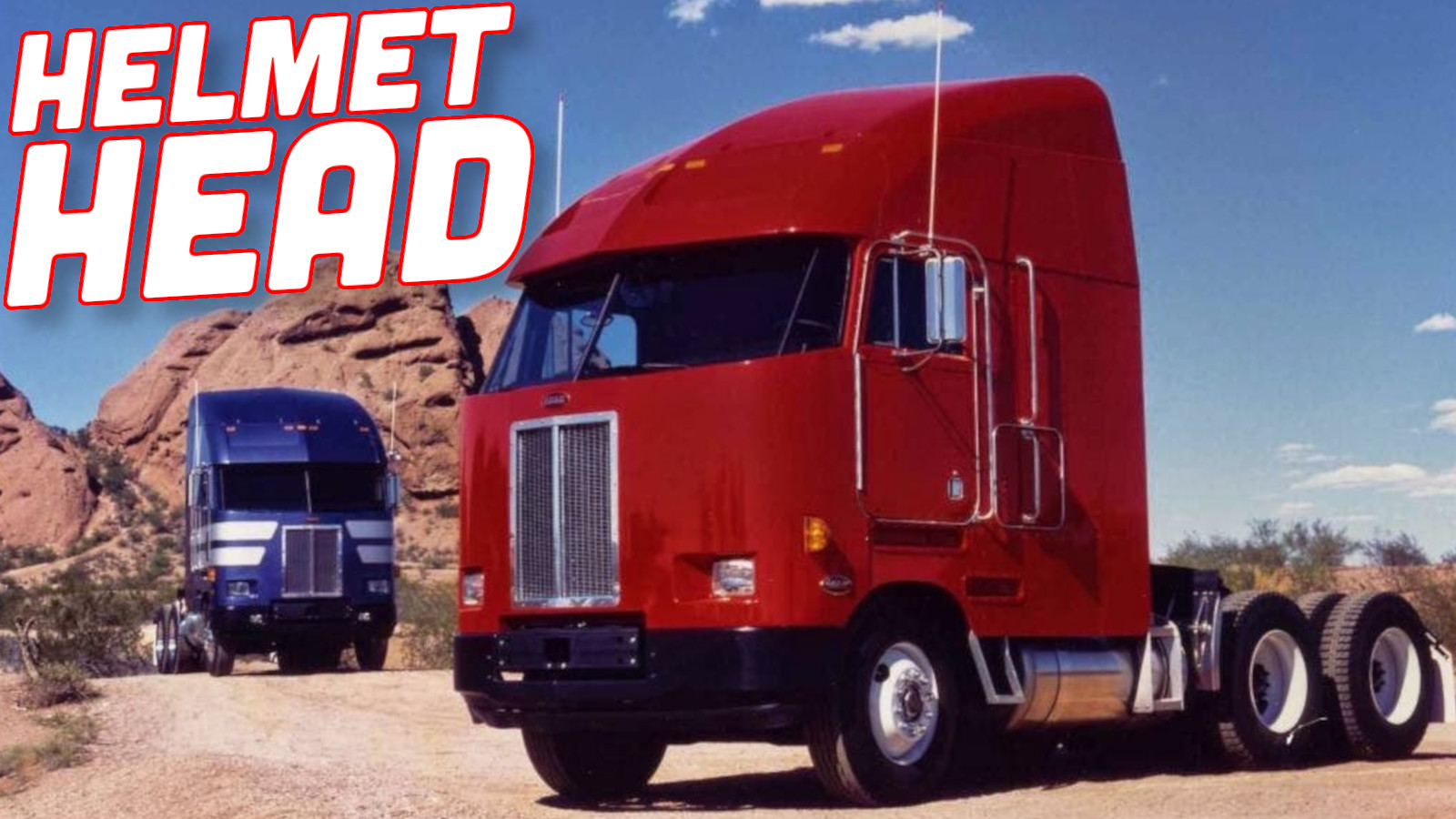






This headline reads very differently in the UK.
Appropriately, this is the first post that I’ve seen the Member thing under my name.
Hehehe. Member.
Those things look awesome! Unrelated: that illustration of the guy standing up in the cab seems WAY to happy to just be standing up in the cab.
What a strange industry. Owners and operators obsess over fractions of an MPG, but when manufacturers offer better options, owners say “no thanks”.
11 mpg with a 9 speed and 3.90 gears? I’m waving the bs flag. A modern cascadia might get that doing 55 with a 70k load, but it would be iffy. And conventional trucks of that era averaged 5, not 8. But then, Pete advertises their 579 as a ten mpg truck, but 8 is much more likely.
I thought this looked like an early Transformer before I clicked the article. With the hood open and the cab raised, it really does look like it’s ready to talk in a bass voice and kick some Decepticon tail.
There’s a joke here about wanting to see my new Member badge while repeatedly reading about Helmet. . . Anyway, I’m not that clever.
I’m glad you showed photos of the “hood” open and cab tilted forward. I recall seeing one of these broken down many years ago with the engine exposed like that and at first I thought the cab had somehow broken in two.